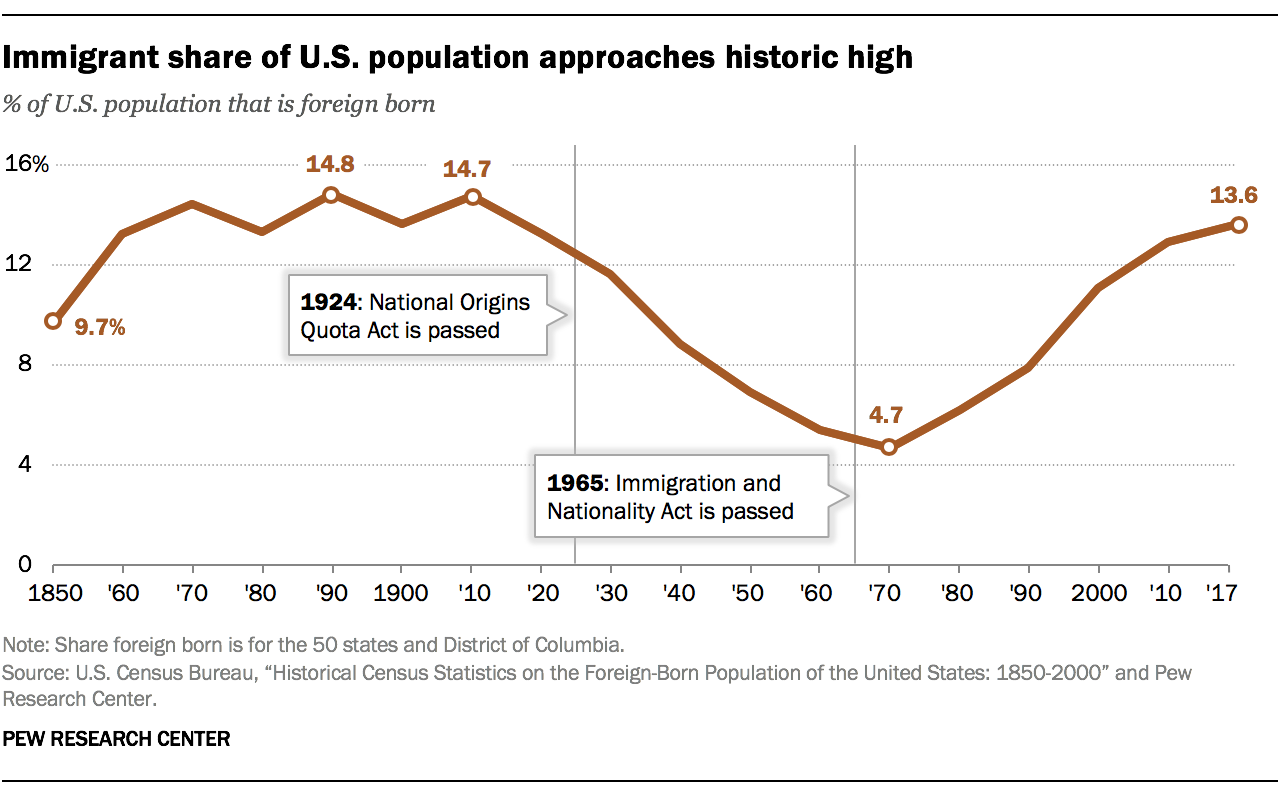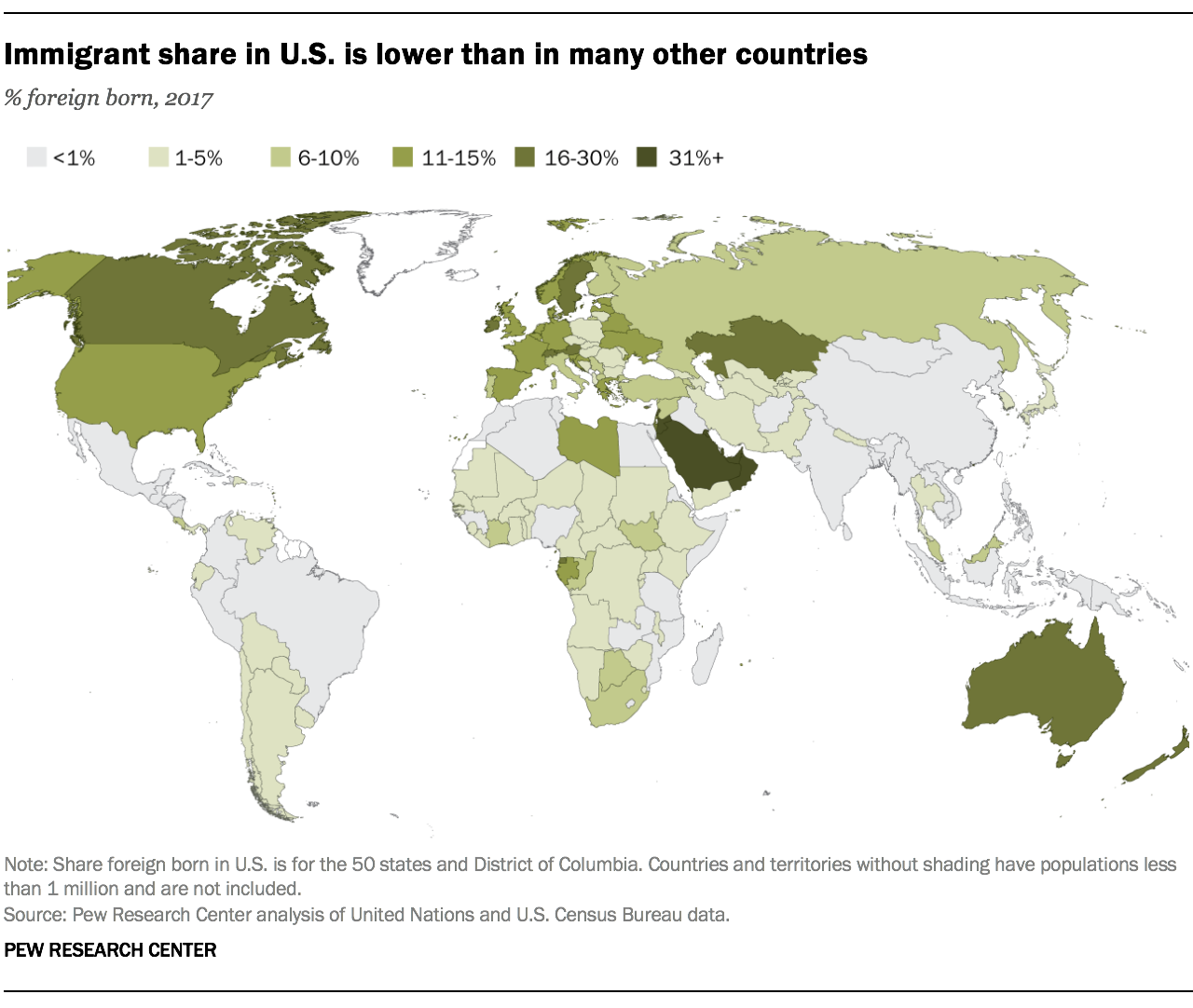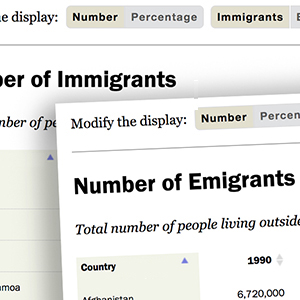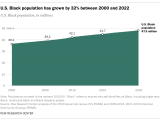Nearly 14% of the U.S. population was born in another country, numbering more than 44 million people in 2017, according to a Pew Research Center analysis of the U.S. Census Bureau’s American Community Survey.

This was the highest share of foreign-born people in the United States since 1910, when immigrants accounted for 14.7% of the American population. The record share was 14.8% in 1890, when 9.2 million immigrants lived in the United States.
The foreign-born population in the U.S. grew substantially during the late 1800s, when immigration from Europe and elsewhere brought millions of new residents to the nation’s shores. In the 1920s, the U.S. adopted a series of more restrictive immigration laws, eventually leading to the establishment of a national-origin quota system in 1924 and a subsequent decline in the foreign-born share of the nation’s population. That immigration system was not changed until 1965, when the Immigration and Nationality Act created the same overarching immigration laws that the U.S. still uses today. Since 1965, at least 59 million immigrants have come to the United States.

Even though the U.S. has more immigrants than any other country, the foreign-born share of its population is far from the highest in the world. In 2017, 25 countries and territories had higher shares of foreign-born people than the U.S., according to United Nations data.
In 2017, large majorities of populations in some Persian Gulf nations, such as the United Arab Emirates (88%) and Kuwait (76%), were born in other countries. (Most foreign-born persons living in Persian Gulf nations are labor migrants and live in the region temporarily.)
Foreign-born people also accounted for a substantial share of the population in Australia (29%), New Zealand (23%) and Canada (21%), as well as in several European countries, such as Switzerland (30%), Austria (19%) and Sweden (18%).

Explore detailed tables on the number and share of immigrants and emigrants by country.
The share of foreign-born people has changed over time in many nations, just as it has in the U.S. Several European countries, as well as other immigrant destinations (Canada and Australia, for example), have seen steady increases in recent decades. But some nations have seen their immigrant shares drop. In several Central and Eastern European countries – such as Latvia and Estonia – more people are leaving than entering, and remaining immigrants are getting older and dying, all leading to a decreasing share of foreign-born people.
In several immigrant destination countries, larger shares of publics want fewer or no immigrants to move to their country, according to a Pew Research Center survey conducted in the spring of 2018. However, support for taking in high-skilled immigrants and refugees fleeing war remains high in some destination countries.
Worldwide, most people do not move across international borders. In all, only 3.4% of the world’s population lives in a country they were not born in, according to data from the UN. This share has ticked up over time, but marginally so: In 1990, 2.9% of the world’s population did not live in their country of birth.

